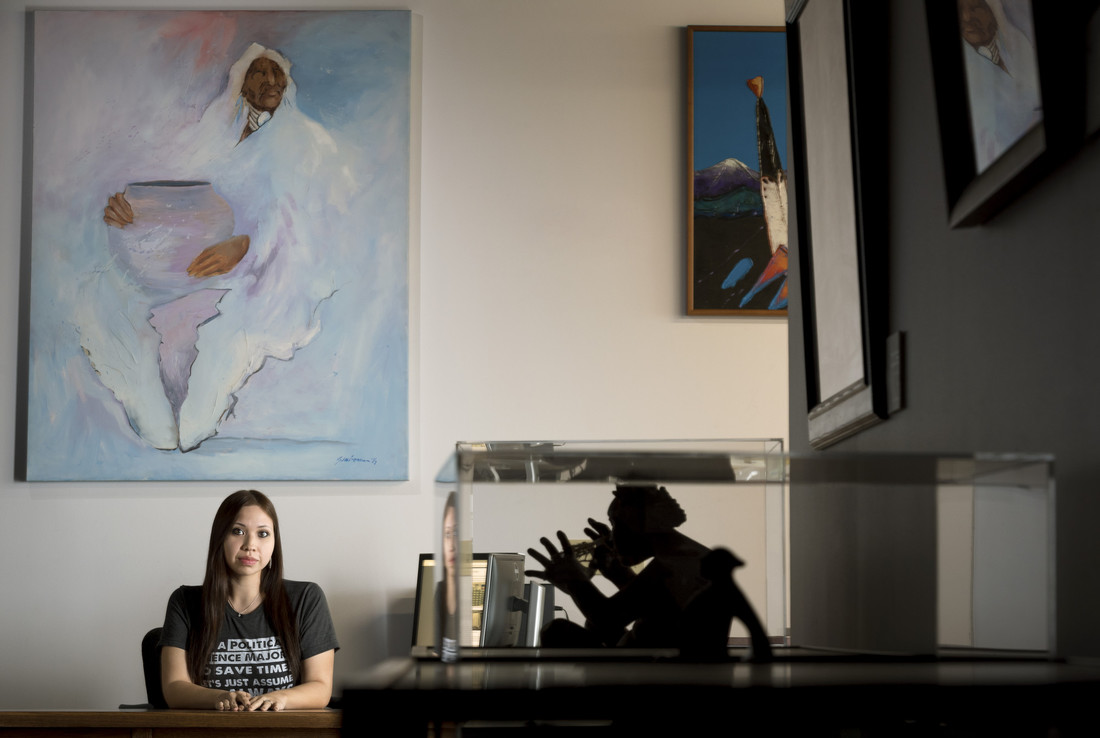
Little Rock, Arkansas– it’s probably not the first place you’d imagine preserving Alaska Native history, but the Sequoyah National Research Center is doing just that. A team of archivists with ties to the state are cataloging over a thousand video tapes that showcase Alaska Native life.
On the corner of Archer and University Avenues, sits one of the largest Native American archives in the world. Erin Fehr is the archivist at Sequoyah National Research Center, which focuses on preserving contemporary material.
“Obviously people are thinking, ‘Why in the world is this collection of Alaska Native films and archives in Arkansas?’” Fehr said. “But, as you can see we do have Alaska Natives in Arkansas, although we are small and few in number.”
Fehr grew up in Arkansas, but her grandmother is Yup’ik from Hooper Bay and for the past few years Fehr’s work has focused on her Alaska Native roots. In 2014 the center got a $24,000 grant to digitize more than 1200 films by the Inupiaq TV producer Jeanie Greene.
Greene has a number of series under her belt like “This Generation” and “Northern Lives,” but she’s most known for Heartbeat Alaska.
One episode is like an hour-long Christmas card. People wish their families Merry Christmas from Sitka over to Seward and all the way out to the village of Tuluksak on the Kuskokwim River, where a woman sings “Oh Christmas” tree in Yup’ik.
These videos are snapshots of Native life in Alaska. They’re sometimes rough and often unrehearsed, but it’s real life, something a lot of people can relate to.
Heidi Davis is another of Arkansas’s Alaska Natives. She’s Tlingit and Haida and grew up in Southeast.
“Heartbeat Alaska– as many Alaskans are familiar with– I grew up watching,” Davis said. “Mostly Kake and then my mom moved us back and forth between Juneau and Sitka– and I lived there for 22 years until my husband and I moved out.”
Davis’ husband was working aboard the Coast Guard Cutter Maple when they met in Sitka. Now the two are working towards undergraduate degrees from the University of Arkansas at Little Rock, where Davis has also been interning at Sequoyah National Research Center this semester. She’s cataloging the Jeanie Greene videos.
“Because I was so excited about it, they started out with a lot of the Kake videos and a lot of the Sitka videos,” Davis said. “A lot of the names are really familiar– Tommy Joseph was in one of the videos I was watching a couple weeks back.”
Joseph is a Tlingit wood carver known for his Totem Poles. So, Davis tags that video with Joseph’s name and any other keywords.
The goal is to make the videos available on the Sequoyah National Research Center’s website. With the help from the center’s other intern, Stephanie Rabaduex, who also has Tlingit and Haida roots, the two should finish cataloging this summer.
They’re getting college credit for their work and Davis has plans to go on to law school after she graduates next year. Growing up in Kake, she said she never could have imagined her life today.
“Me being a Tlingit and Haida from Southeast Alaska – I’ve come so far in Arkansas and working on something that ties me to my roots,” Davis said. “I think it’s pretty amazing.”
Davis said she hopes to move back to Sitka with her family someday, but for now, her work is what’s keeping her connected to Alaska.
Emily Russell is the voice of Alaska morning news as Alaska Public Media’s Morning News Host and Producer.
Originally from the Adirondacks in upstate New York, Emily moved to Alaska in 2012. She skied her way through three winters in Fairbanks, earning her Master’s degree in Northern Studies from UAF.
Emily’s career in radio started in Nome in 2015, reporting for KNOM on everything from subsistence whale harvests to housing shortages in Native villages. She then worked for KCAW in Sitka, finally seeing what all the fuss with Southeast, Alaska was all about.
Back on the road system, Emily is looking forward to driving her Subaru around the region to hike, hunt, fish and pick as many berries as possible. When she’s not talking into the mic in the morning, Emily can be found reporting from the peaks above Anchorage to the rivers around Southcentral.




